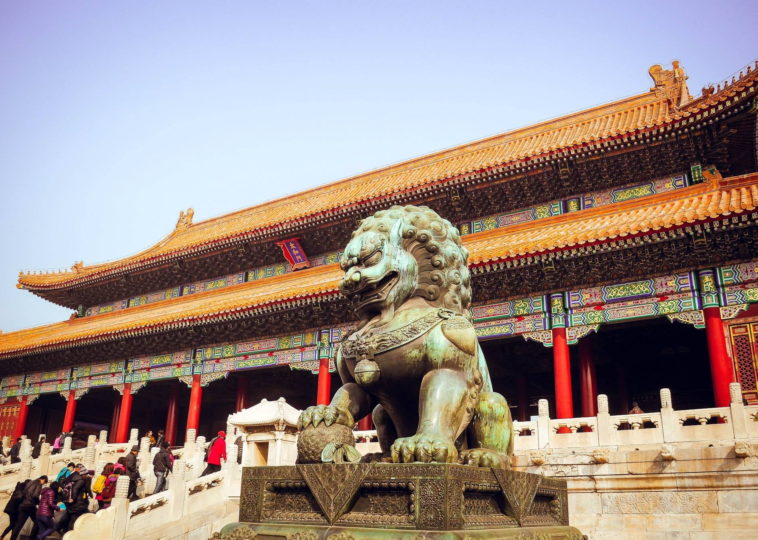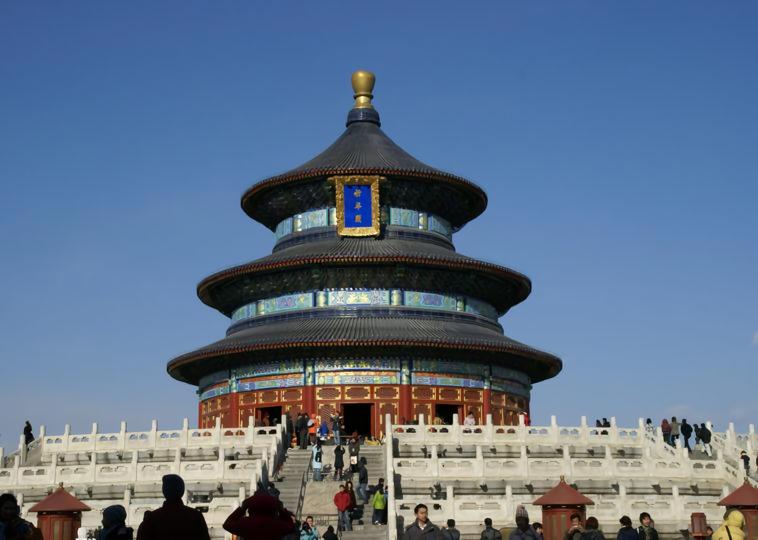9 Majestic Tourist Attractions in China

Contents [hide]
The vast country of China has many picturesque places, beautiful landscapes, and historical places, making it the third most visited country in the world. The efficient transport systems, comfortable restaurants, and dishes have also become the best part of the tourism industry in China.
Ever since the world discovered China through the writings of adventurer Marco Polo more than 700 years ago, we have regarded this tremendous Asian country as the embodiment of everything mysterious and exotic. Even after decades of economic growth, this vast country has lost none of its fascination.
Skyline of Pudong

Oriental Pearl TV Tower has become the main attraction in Pudong among tourists. This 468-meter television tower is China’s second-tallest television tower known for its unique architectural style. The building consists of three large and five smaller spheres, larger [here at the top of the tower, known as a room module.
The second tower ball, 259 meters from the floor, provides a glass-bottom viewing platform to explore the Shanghai sky, which will be the most exciting experience to get from Shanghai city. China’s third tallest skyscraper, the Jinmao Tower, located next to the Oriental TV Tower, offers an observation deck on the tower’s 55th floor and offers spectacular city views.
Yellow Mountains

Yellow Mountains are located in Anhui Province in eastern China, standing at 6115 feet. The hot springs, pine trees, clouds, winter snow landscapes, and oddly shaped rocks are the main attractions that can be experienced in the Yellow Mountains. Yellow Mountains are also a UNESCO World Heritage Site. There are 140 different sections open to tourists in the Yellow Mountains.
Hiking has become a popular activity in the Yellow Mountains. The safe steps built on the cliffs of the Yellow Mountains also allow tourists to explore the beauty of the surrounding places. There is also a 39-foot-high 8-meter stone called the flying rock, balanced on a comparatively slight ledge, one of exciting sight on yellow mountains.
Jiuzhaigou Valley, Sichuan

Jiuzhaigou Valley is a nature reserve and national park in Sichuan, nature reserve, also listed as World Heritage. This valley is top-rated for its colored lakes, multi-story waterfalls, and snow-capped peaks. Jiuzhaigou can be visited year after year. In autumn, the whole valley and lakes are used to make brilliant colors.
Three central valleys in Jiuzhaigou are Rize Valley, Zechawa Valley, and Shuzeng Valley, which form a Y shape in meetings. Jiuzhaigou Valley also includes 114 lakes, and several waterfalls have different water colorations. The green-blue color of the water of the lakes is also visible in the winter season.
Li River Cruise

The Li River flows through the Guangxi Zhuang region in China. The spectacular river views make it one of the best water wonders in the world. Li River cruise is one of the most popular tourist activities in the country. The river trip begins in the Guilin area and ends in Yangshou, over 83 kilometers.
The tourist can see beautiful landscapes, rolling hills, cliffs, caves, and forests on both sides of the river. The experienced guides will share fascinating stories about different river attractions with tourists during the river cruise.
Victoria Harbor, Hong Kong

The third-largest port in the world, between Hong Kong Island and the Kowloon Peninsula. It is the most popular tourist attraction in Hong Kong, known for its spectacular panoramic views.
The light symphony in the port of Victoria at night with 40 skyscrapers is one of the best that can be experienced in Hong Kong; in 2005, it was included in the Guinness Book of World Records as the world’s most significant permanent light and sound show. The night cruise at Victoria Harbor becomes the best way to experience the Symphony of Lights.
Temple of Heaven, Beijing

It is vital for its architectural design and is another world heritage in the country. It is also found as a Taoist temple, one of the religious traditions of China, a perfect example of the Ming Dynasty’s imperial architecture. The Temple of Heaven was built between 1406 and 1420 by Emperor Yongle to worship Heaven annually for a good harvest.
The design of the temple reflects the relationship between Heaven and Earth. The circular wall in the temple of Heaven represents Heaven, and the rectangular wall represents Earth. The four main pillars in this temple’s prayer room represent four seasons, and twelve inner pillars represent twelve months of the year.
Mogao Caves, Dunhuang

Mogao Caves, called Caves of a Thousand Buddhas, is in Dun Huang, western China. There are approximately 600 preserved caves in the network of Mogao caves, of which only thirty are open to the public. These caves encompass many Buddhist arts spanning 1000 years or more.
The first part of the Mogao Caves was carved in 366, from the vision of Buddhist monk Le Zun to the construction of thousands of Buddhas on the site. In earlier times, Mogao caves became a place of meditation and pilgrimage in later centuries.
Forbidden City, Beijing

It is also known as the Imperial Palace, the largest palace in the world in Beijing. The entire complex of the Forbidden City extends over an area of 183 hectares, consisting of 980 buildings with a total of 8707 rooms.
Forbidden City holds the most extensive collection of old wooden structures in the world and was listed as a UNESCO World Heritage Site in 1987. Forbidden City attracts more than 10 million visitors every year. Construction of the Forbidden City began in 1407 by Emperor Zhu Di and took fourteen years to complete.
The Great Wall of China

It is a discontinuous network of walls built to protect the borders of China. The Great Wall is 8,850 kilometers, including the size of the trenches and defense barriers. Great Wall of China was built by different dynasties in different centuries.
The first part of the Great Wall was built between 220 and 206 by the first Chinese emperor, Qin Shi Huang. Stones, wood, manipulated Earth, and brick are the primary materials used to construct the structures. The height of the large wall measured up to 25 feet and 15 to 13 feet wide.


